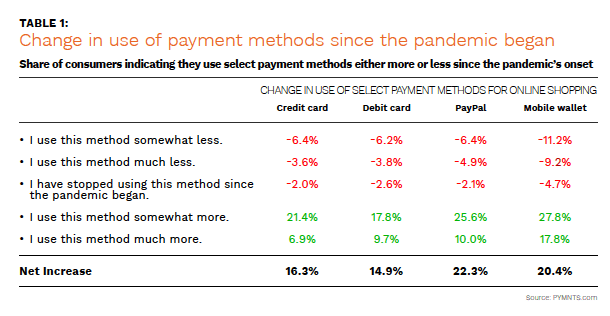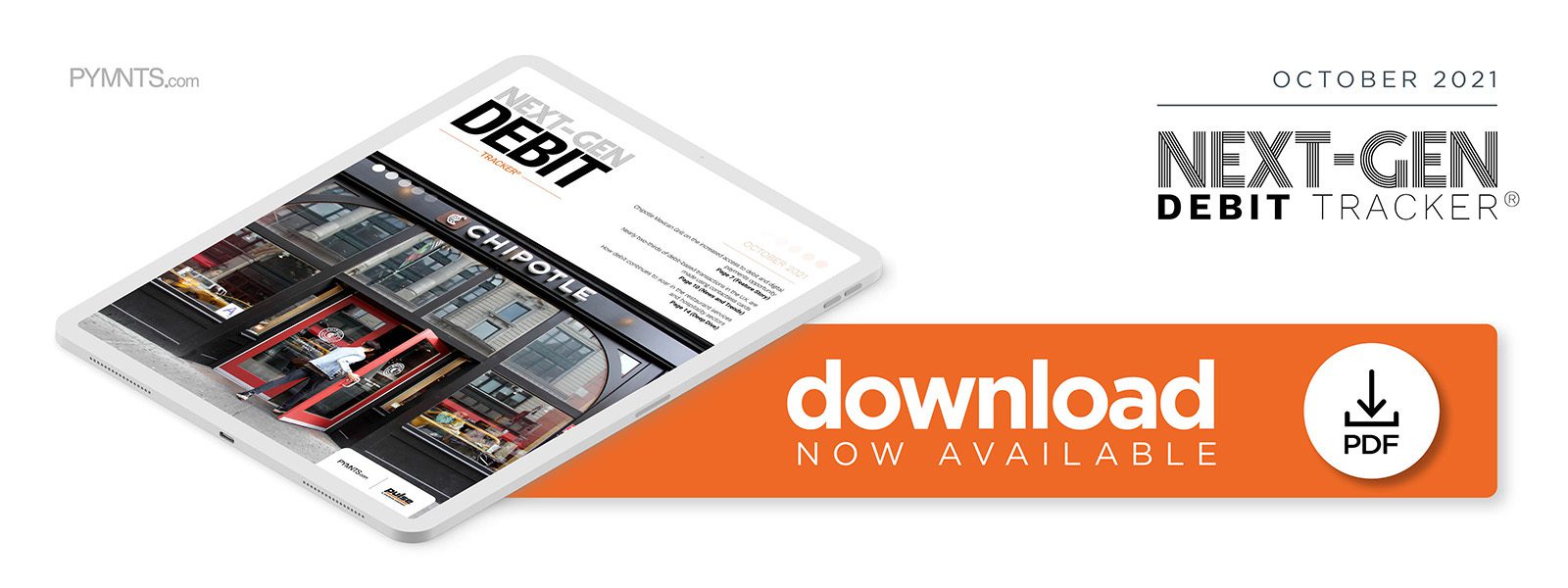Why Debit Use Is Soaring in the Restaurant and Hospitality Sector

The pandemic not only forced the closure of restaurants in March 2020 but also effectively shut down the use of cash.
Eight percent of U.S. businesses went cashless at the pandemic’s onset amid initial concerns about its potential to spread the virus, and that number soared to 31% by the end of April. The cash ban leveled off at 20% by September 2020, but its impact on debit cards — the chief beneficiary of the retreat from paper money — was momentous. Debit surpassed not just cash payments but also credit spending for the first time last year, according to PULSE’s 2021 Debit Issuer Study.
The implications for the restaurant and hospitality sector are significant. The restaurant industry was among those most deeply affected by the pandemic’s digital shift, and indicators suggest this change may be lasting. PYMNTS research found that 29 million U.S. consumers — 12% of the adult population — have switched from dining on-site to ordering from restaurants online since the pandemic began, and 81% plan to maintain their digital shopping habits for restaurant purchases.
A Federal Reserve study confirmed that debit cards were the most frequently used payment instrument last year, making up 28% of payments volume. It further revealed that, as the demand rose for takeout from dine-in restaurants, consumers were likelier to use not-in-person payments at a wider range of restaurants and for a bigger spread of payment values.
The following Deep Dive examines the upward surge in debit use during the past 18 months and its likely continued growth in the restaurant and hospitality industries.
Debit’s Rise Reflects the Bigger Ticket Size, Card-Not-Present Spend
An unprecedented fusion of factors led to debit’s extraordinary rise in 2020. For the first time since the launch of PULSE’s annual study in 2005, the number of debit transactions fell while debit dollar volume rose, reflecting consumers’ needs under stay-at-home mandates to make less frequent but larger purchases. Debit transactions totaled 76 billion last year, down from 78 billion in 2019 — a 2.5% year-over-year dive. Total debit spending grew by 8% to a record $3.7 trillion, however, as ticket sizes increased, eclipsing credit card outlay. Average debit ticket size swelled by more than 10% year over year in 2020 — the largest hike in the study’s history.
Another critical feature of last year’s rise in debit was a dramatic growth in card-not-present (CNP) transactions, which increased as consumers shifted to digital commerce. CNP use reached 34% of debit transactions and 46% of debit dollar volume in 2020, rising from
 27% and 38%, respectively, in 2019. The study also revealed that contactless debit card penetration more than doubled to 30% of all debit cards in 2020 from 11% in 2019. Contactless debit transactions grew sixfold, although they still represented just a fraction of all debit payments at 1.6%. Debit transactions in mobile wallets also grew by more than half to reach 2 billion, with account-to-account (A2A) transactions the fastest-growing debit category.
27% and 38%, respectively, in 2019. The study also revealed that contactless debit card penetration more than doubled to 30% of all debit cards in 2020 from 11% in 2019. Contactless debit transactions grew sixfold, although they still represented just a fraction of all debit payments at 1.6%. Debit transactions in mobile wallets also grew by more than half to reach 2 billion, with account-to-account (A2A) transactions the fastest-growing debit category.
Debit’s Continued Growth in the Restaurant and Hospitality Sector
The digital transformation is expected to fuel more spending online with debit cards. The shift from credit to debit in 2020 primarily reflected consumers’ debt-wariness at the height of the pandemic, but a July survey showed 76% of U.S. consumers are continuing to eschew credit cards. Data in May showed debit transactions still surging more than a year into the health crisis, with credit growth remaining flat.
Card giant Visa, for example, reported a 24% growth in debit during the March quarter, while credit was unchanged. Mastercard, meanwhile, saw a 27% increase in debit, while credit fell by 1%. Visa Chief Financial Officer Vasant Prabhu noted that debit unmistakably opens the door to cash digitization as consumers’ first move in the shift away from the use of cash.
The restaurant and hospitality industries are likely to continue to see growth in debit payments volume, and much of that will be CNP or contactless. One study predicted that by 2023, consumers will use debit and credit cards to pay for 85% of their digital retail and food services spending, with credit card transaction value continuing to fall as debit spend makes up a bigger piece of that pie.
New data from Barclaycard showed that U.K. consumer spending on restaurants experienced its first upward movement since the pandemic began, albeit just a slight 0.1%. Other parts of the hospitality industry saw larger growth, with spending on pubs, clubs and bars jumping 43%.
Spending will inevitably grow as reopening continues, but economic uncertainty is far from over, indicating that debit’s star turn will be one to watch for the foreseeable future.
